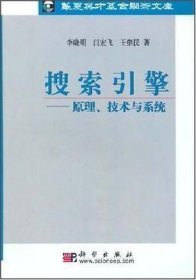
搜索引擎
①一般下午5点前订单,当日发货,开发票联系客服②教材,学习,考试类书默认有笔记(或做过)③其他类书一般无笔记,提前与客服沟通好再下单,否则本店不承担责任)④部分图书籍采用标准图片,可能存在不同印次不同封面,内容一致⑤出版时间过长的书都可能有自然发黄现象。
¥ 33.75 7.5折 ¥ 45 九品
库存2件
作者(美)克罗夫特
出版社机械工业出版社
ISBN9787111282471
出版时间2009-10
四部分类子部>艺术>书画
装帧平装
定价45元
货号972697056286720013
上书时间2024-11-12
- 在售商品 暂无
- 平均发货时间 16小时
- 好评率 暂无
- 最新上架
商品详情
- 品相描述:九品
- 商品描述
-
前言
为了进一步贯彻“国务院关于大力推进职业教育改革与发展的决定”的文件精神,加强职业教育教材建设,满足现阶段职业院校深化教学改革对教材建设的要求,根据现阶段职业院校该专业没有一套较为合适的教材,大部分院校采用自编或行业的考证培训教材组织教学,非常不适合职业教育的实际情况,机械工业出版社于2008年8月在北京召开了“职业教育金属材料检测类专业教学研讨及教材建设会议”,在会上,来自全国该专业的骨干教师、专家、企业代表研讨了新的职业教育形势下该专业的课程体系,本书就是根据会议所确定的教学大纲要求和高职教育培养目标组织编写的。
本书根据国家职业技能标准,将无损检测技术专业不同等级的核心操作技能提炼出来,用极具典型性和代表性的实例加以表现并分步骤进行讲解。本书新颖的编排形式可以使读者对每个案例的操作全过程一目了然,力求使读者尽快熟练掌握无损检测技术各个等级的核心操作技能,力求对读者通过职业资格鉴定考试有所帮助。同时,读者也可以将书中相应实例应用于实际生产操作。
本书以数十个操作训练的实例较全面地介绍了射线检测、超声检测、磁粉检测、渗透检测的操作过程和方法,重点强调无损检测实际应用工艺,增加了典型检测工艺卡和应用实例介绍,力求为无损检测从业人员提供无损检测技术应用方面的指导和帮助。
全书共四个单元,邓洪军编写第一、二单元,路宝学编写第三、四单元。全书由邓洪军统稿,渤海船舶重工有限公司研究员级高工杨家武主审。
编写过程中,作者参阅了国内外出版的有关教材和资料,得到了北京普汇恒达材料测试有限公司、河北石油职业技术学院、陕西工业职业技术学院、四川工程职业技术学院、包头职业技术学院有关同志的有益指导,在此一并表示衷心感谢!
由于编写时间仓促,加之作者水平有限,书中不妥之处在所难免,恳请读者批评指正。
作者简介
W.Bruce Croft,马萨诸塞大学阿默斯特分校计算机科学特聘教授、ACM会士。他创建了智能信息检索研究中心,发表了200余篇论文,多次获奖,其中包括2003年由ACM SIGIR颁发的Gerard Salton奖。
Donald Metzler马萨诸塞大学阿默斯特分校博士,是位于加州Santa Clara的雅虎研究中心搜索与计算广告组的研究科学家。
Trevor Strohman马萨诸塞大学阿默斯特分校博士,是Google公司搜索质量部门的软件工程师。他开发了Galago搜索引擎,也是Indri搜索引擎的主要开发者。
目录
1 Search Engines and Information Retrieval
1.1 What Is Information Retrieval?
1.2 The Big Issues
1.3 Search Engines
1.4 Search Engineers
2 Architecture of a Search Engine
2.1 What Is an Architecture
2.2 Basic Building Blocks
2.3 Breaking It Down
2.3.1 Text Acquisition
2.3.2 Text Transformation
2.3.3 Index Creation
2.3.4 User Interaction
2.3.5 Ranking
2.3.6 Evaluation
2.4 How Does It Really Work?
3 Crawls and Feeds
3.1 Deciding What to Search
3.2 Crawling the Web
3.2.1 Retrieving Web Pages
3.2.2 The Web Crawler
3.2.3 Freshness
3.2.4 Focused Crawling
3.2.5 Deep Web
3.2.6 Sitemaps
3.2.7 Distributed Crawling
3.3 Crawling Documents and Email
3.4 Document Feeds
3.5 The Conversion Problem
3.5.1 Character Encodings
3.6 Storing the Documents
3.6,1 Using a Database System
3.6.2 Random Access
3.6.3 Compression and Large Files
3.6.4 Update
3.6.5 BigTable
3.7 Detecting Duplicates
3.8 Removing Noise
4 Processing Text
4.1 From Words to Terms
4.2 Text Statistics
4.2.1 Vocabulary Growth
4.2.2 Estimating Collection and Result Set Sizes
4.3 Document Parsing
4.3.1 Overview
4.3.2 Tokenizing
4.3.3 Stopping
4.3.4 Stemming
4.3.5 Phrases and N-grams
4.4 Document Structure and Markup
4.5 Link Analysis
4.5.1 Anchor Text
4.5.2 PageRank
4.5.3 Link Quality
4.6 Information Extraction
4.6.1 Hidden Markov Models for Extraction
4.7 Internationalization
5 Ranking with Indexes
5.1 Overview
5.2 Abstract Model of Ranking
5.3 Inverted Indexes
5.3.1 Documents
5.3.2 Counts
5.3.3 Positions
5.3A Fields and Extents
5.3.5 Scores
5.3.6 Ordering
5.4 Compression
5.4.1 Entropy and Ambiguity
5.4.2 Delta Encoding
5.4.3 Bit-Aligned Codes
5.4.4 Byte-Aligned Codes
5.4.5 Compression in Practice
5.4.6 Looking Ahead
5.4.7 Skipping and Skip Pointers
5.5 Auxiliary Structures
5.6 Index Construction
5.6.1 Simple Construction
5.6.2 Merging
5.6.3 Parallelism and Distribution
5.6.4 Update
5.7 Query Processing
5.7.1 Document-at-a-time Evaluation
5.7.2 Term-at-a-time Evaluation
5.7.3 Optimization Techniques
5.7.4 Structured Queries
5.7.5 Distributed Evaluation
5.7.6 Caching
6 Queries and Interfaces
6.1 Information Needs and Queries
6.2 Query Transformation and Refinement
6.2.1 Stopping and Stemming Revisited
6.2.2 Spell Checking and Suggestions
6.2.3 Query Expansion
6.2.4 Relevance Feedback
6.2.5 Context and Personalization
6.3 Showing the Results
6.3.1 Result Pages and Snippets
6.3.2 Advertising and Search
6.3.3 Clustering the Results
6.4 Cross-Language Search
7 Retrieval Models
7.1 Overview of Retrieval Models
7.1.1 Boolean Retrieval
7.1.2 The Vector Space Model
7.2 Probabilistic Models
7.2.1 Information Retrieval as Classification
7.2.2 The BM25 Ranking Algorithm
7.3 Ranking Based on Language Models
7.3.1 Query Likelihood Ranking
7.3.2 Relevance Models and Pseudo-Relevance Feedback
7.4 Complex Queries and Combining Evidence
7.4.1 The Inference Network Model
7.4.2 The Galago Query Language
7.5 Web Search
7.6 Machine Learning and Information Retrieval
7.6.1 Learning to Rank
7.6.2 Topic Models and Vocabulary Mismatch
7.7 Application-Based Models
8 Evaluating Search Engines
8.1 Why Evaluate ?
8.2 The Evaluation Corpus
8.3 Logging
8.4 Effectiveness Metrics
8.4.1 Recall and Precision
8.4.2 Averaging and Interpolation
8.4.3 Focusing on the Top Documents
8.4.4 Using Preferences
……
9 Classification and Clustering
10 Social Search
11 Beyond Bag of Words
Reverences
Index
内容摘要
《搜索引擎:信息检索实践(英文版)》介绍了信息检索(1R)中的关键问题。以及这些问题如何影响搜索引擎的设计与实现,并且用数学模型强化了重要的概念。对于网络搜索引擎这一重要的话题,书中主要涵盖了在网络上广泛使用的搜索技术。
《搜索引擎:信息检索实践(英文版)》适用于高等院校计算机科学或计算机工程专业的本科生、研究生,对于专业人士而言,《搜索引擎:信息检索实践(英文版)》也不失为一本理想的入门教材。
精彩内容
I. I What Is Information Retrieval?
This book is designed to help people understand search engines, evaluate and compare them, and modify them for specific applications. Searching for information on the Web is, for most people, a daily activity. Search and communication are by far the most popular uses of the computer. Not surprisingly, many people in companies and universities are trying to improve search by coming up with easier and faster ways to find the right information. These people, whether they call themselves computer scientists, software engineers, information scientists, search engine optimizers, or something else, are working in the field of Information Retrieval.1 So, before we launch into a detailed journey through the internals of search engines, we will take a few pages to provide a context for the rest of the book.
Gerard Salton, a pioneer in information retrieval and one of the leading figures from the 1960s to the 1990s, proposed the following definition in his classic 1968 textbook (Salton, 1968):
Information retrieval is a field concerned with the structure, analysis, organization, storage, searching, and retrieval of information.
Despite the huge advances in the understanding and technology of search in the past 40 years, this definition is still appropriate and accurate. The term "informa……
……
相关推荐
— 没有更多了 —





















以下为对购买帮助不大的评价